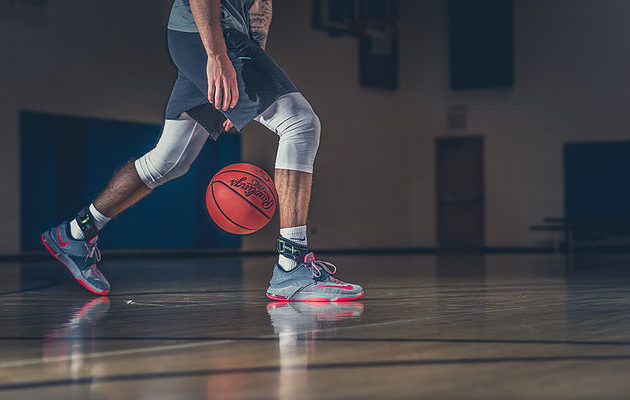March Madness is upon us once again, it happens just like clockwork…every second week of March through the first week of April, The National Collegiate Athletic Association (NCAA) Men’s and Women’s Basketball tournaments have the interest of sports fans everywhere. The championship team has to win at least six games in a row to claim the title, or single-elimination tournaments. Lose one and you’re going home. 68 men’s college basketball teams and 64 women’s college basketball teams are all striving for the biggest prize.
Basketball began in Springfield Massachusetts in 1891 in by a Canadian Phys Ed instructor, James Naismith with the intention of a sport less injury-prone than football. Maybe so, but 22% of all male basketball players sustained at least one time-loss injury yearly and 42% of the injuries were to the ankle/foot. Sprains were the most common type of injury at 43%. Over one million athletes participate in high school basketball with just over 36,000 going on to compete with the NCAA.
Basketball fans watch players running, jumping, cutting, making quick starts and stops, and plenty of direct contact with the other players. Tremendous pressure is exerted on the foot and ankle during this fast-paced sport. This is a physically demanding sport. The injuries which occur can be categorized into acute or chronic injuries.
Immediate action can save a lot of pain and shorten the recovery time. Combining ice and elevation with a quick dose of an anti-inflammatory can reduce swelling and pain the control. A medical professional should examine the ankle to determine if return to pay is advised.
The most common acute injuries consist of ankle sprains, torn ligaments, muscle pulls, tendon ruptures, and fractures which result from landing improperly or twisting. The sprain is an injury to the lateral stabilizing ligaments of the ankle, which are the 3 ligaments which form the lateral ankle ligamentous complex. Most commonly injured is the anterior talofibular ligament, or ATFL which happens when the ankle rolls in, or an inversion injury. The severity varies and can ruin the game, the week, the month, or the year for the athlete.
Insufficient loosening up can cause chronic injuries, as well as ineffective conditioning, ill-fitting or incorrect shoes. If you take your game seriously, invest in a good basketball shoe for stability, flexibility, and shock absorption, and take the time to warm up pre-game. If your ‘lucky shoe’ is too warn, your luck can turn bad. Stress fractures, plantar fasciitis, shin splints, Achilles heel, tendinitis, patellar tendinitis, and sesamoiditis are common to basketball players due to stress and overuse.
One of the most common injuries are fractures due to the chronic impact of the ballistic activity, running and jumping, as well as the athlete’s foot structure. Each foot is made up of 26 bones, each one is placed under so much pressure during their use in the game that they fracture. Small breaks such as stress fractures take time to develop and are typically related to overuse. Sudden breaks are classically caused by impacts. Warming up well, avoiding overtraining and using proper landing techniques when jumping can help avoid these.
Severe cases or in recurring cases, physical therapy may be prescribed. If instability becomes chronic, surgery may be suggested.
Dr. Marshall Allegra spends time speaking with each patient at his office in Hazlet to understand their unique condition. With over 25 years of experience as an Orthopedic Surgeon, Dr. Allegra is an expert at diagnosing pain and prescribing the most appropriate non-surgical interventions before surgery is recommended.

